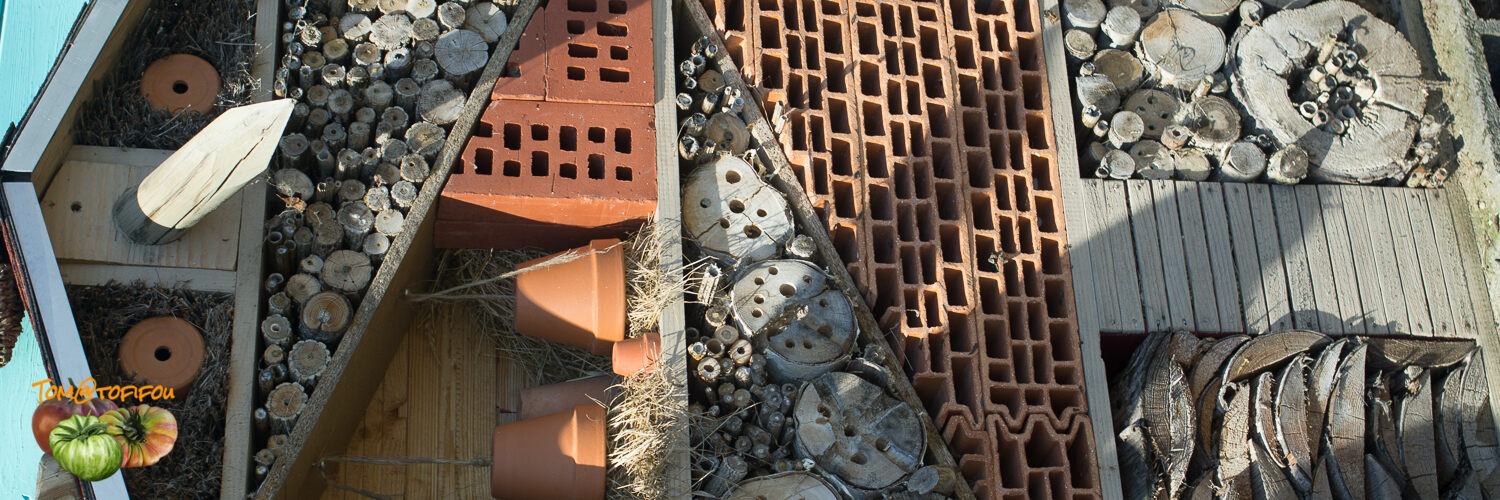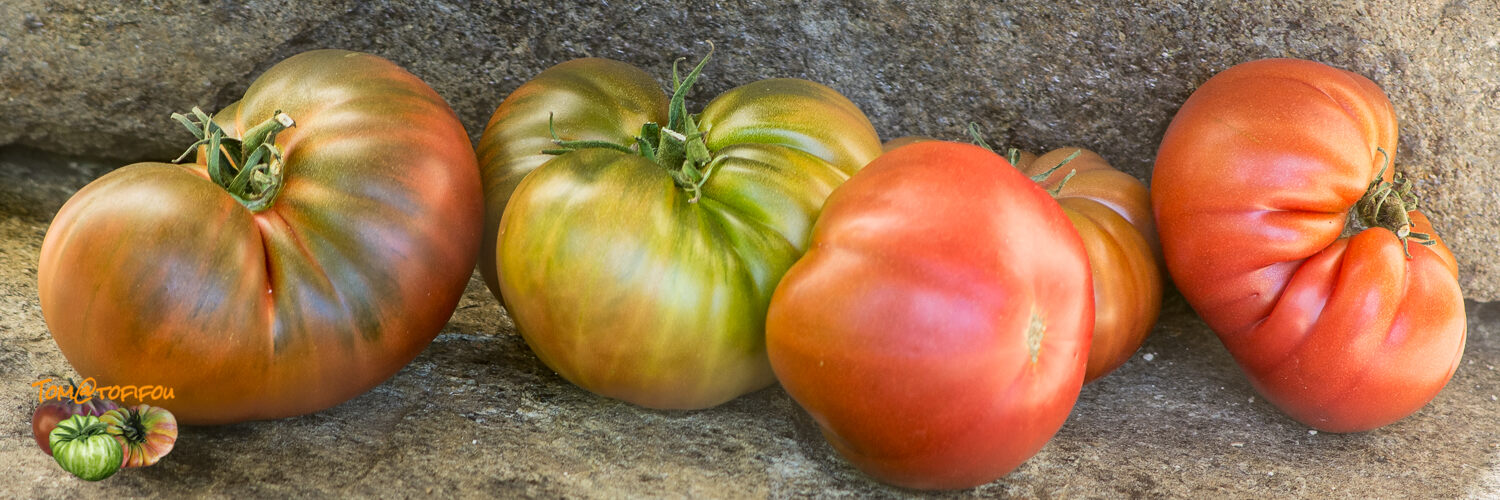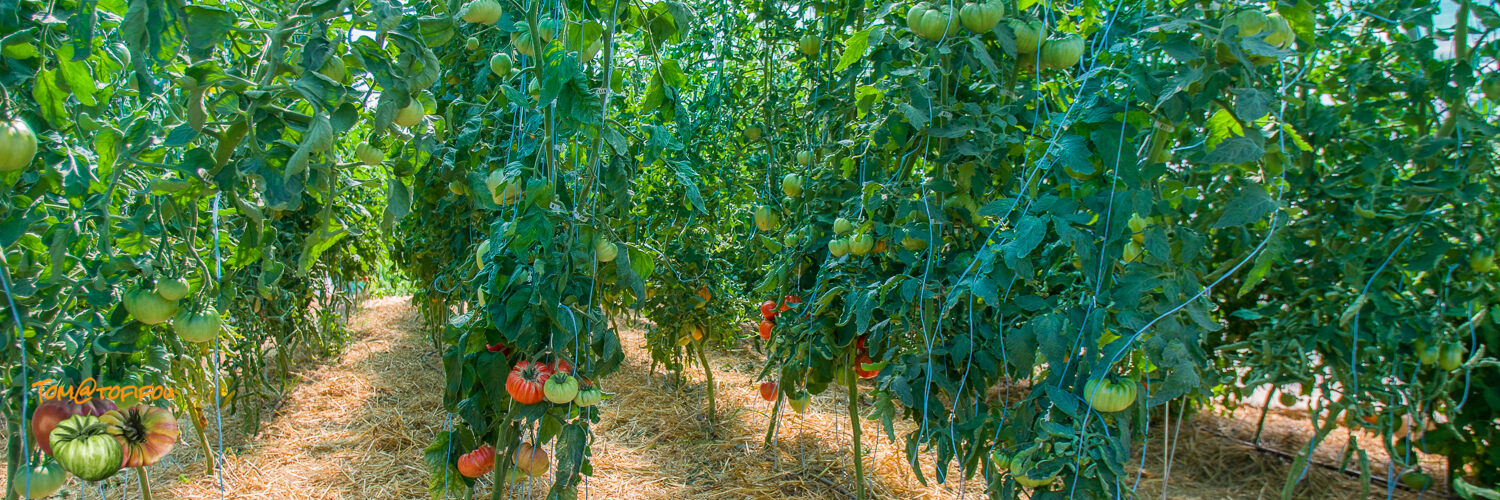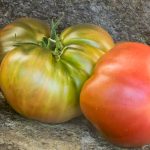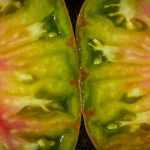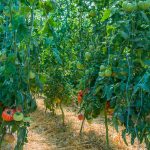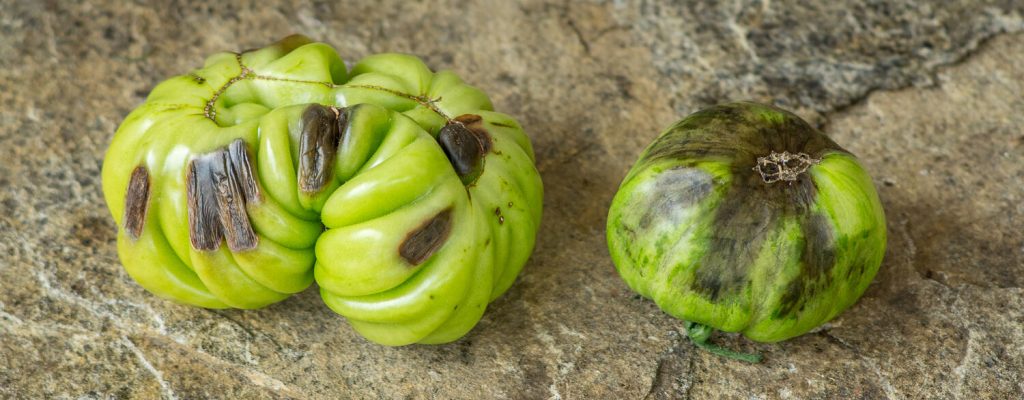
Introduction
Faced with these kinds of problems, which appeared last season in a greenhouse, it seemed necessary to me to know the causes, in order to better understand these phenomena and perhaps remedy them. A good identification of the symptoms, therefore of the disorder, whether due to a deficiency or conversely to an overdose, is essential because it is already half the way to a return to normal. This article is the result of many and varied researches that will allow us not to be helpless when these problems arise and, I hope, to remedy them effectively.
The tomato, like most cultivated plants, needs various mineral elements to ensure its growth throughout its growth cycle. When they are brought in excess or lacking, nutritional disorders occur.
Its fertilization can be influenced by various parameters:
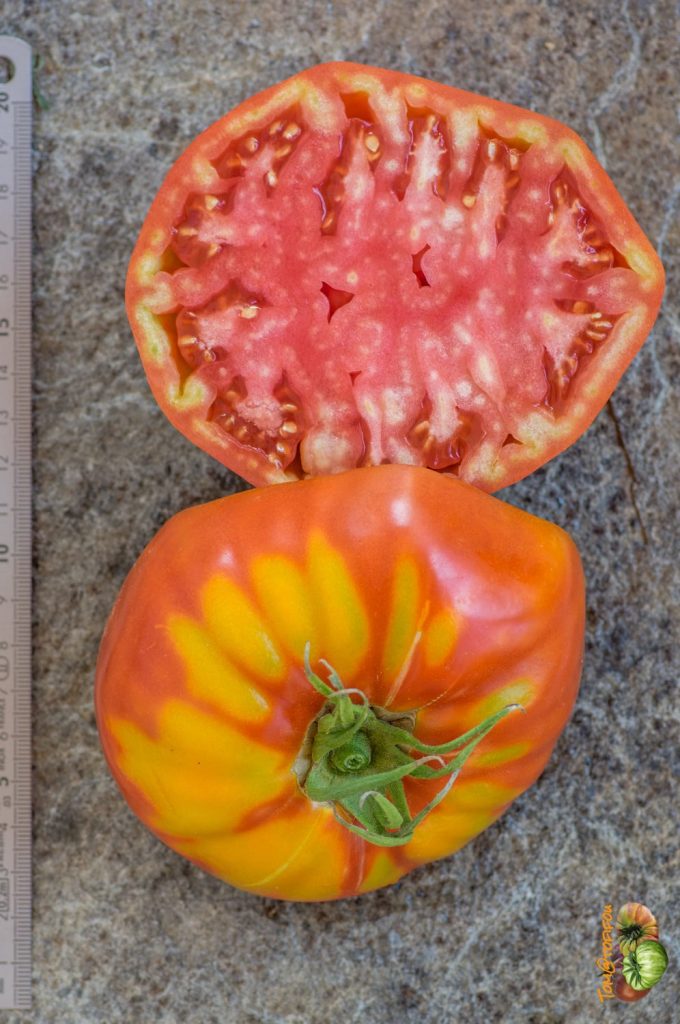
- the richness and balance of the soil in fertilizing elements (soil analyses are therefore essential) . - the type of tomato grown and the variety chosen . - the planting density . - the production method (soil or soil-less cultivation, nature of the substrate) . - . the nature of the irrigation system and its management . - and any other factor affecting plant growth.
These conditions are among the non-parasitic diseases and grouped under the terminology "nutritional disorders". These are quite frequently manifested on tomato by yellowing of varying nature and distribution on the plants.
-Simple classification of deficiencies according to the appearance of symptoms on the foliage.
-Symptoms appearing on the young leaflets and being able to generalize on all the foliage of the plant deficiency in : Calcium - Boron - Manganese - Sulfur - Iron - Zinc
-Symptoms appearing on the oldest leaves and being able to generalize on all the foliage of the plant: deficiency in: Potassium - Magnesium - Nitrogen - Phosphorus - Molybdenum - Copper
Contents
Potassium (K) deficiency
Potassium (K) is the third of three primary nutrients required by plants, along with nitrogen (N) and phosphorus (P). Unlike nitrogen and phosphorus, potassium is not used in the structural synthesis of bio-chemically important molecules. Potassium is found in the solution of plant cells and is used to maintain the turgor pressure of the cell (i.e. it prevents the plant from wilting). In addition, potassium plays a role in the proper functioning of stomata (cells on the underside of leaves that open and close to allow water vapor and waste gases to escape) and acts as an activator of enzymes.
-Symptoms
Symptoms are mainly visible on older leaves and affect young leaves only in extreme cases. Mild potassium deficiencies are characterized by the development of chlorotic spots, more or less marked on the edges of the leaves (tip blight). Whitish, necrotic spots can appear within these chlorotic zones. In severe cases, these become dry, coppery burns (necrosis) that progress gradually from the leaf margins to the main vein. The main veins remain green and the leaves tend to curl and wrinkle. Plants have woody stems and growth is slowed. Flowering and fruit set are compromised. If the deficiency occurs during fruit development, tomatoes show patchy ripening, with some areas remaining green, mostly near the stems. Fruits may be softer, hollow, and irregular in size, poorly colored and showing a symptom of mottling. Plant growth is more or less reduced.
-Reasons
This deficiency is due to insufficient reserves of potassium available in the soil, or from poor uptake of the latter. It is usually found in acidic soils but also in light soils with low organic content. Other triggers can be excessive watering which causes nutrient leaching, but also drought conditions which can block the uptake of these nutrients. Potassium maintains the ionic and water balance of the plant. It contributes to the production and transport of sugars within the plant, as well as to enzyme activation and protein synthesis. Potassium is also required for the synthesis of pigments, notably lycopene. Plants with potassium deficiency will be more susceptible to drought and disease.
-Cures
First of all it will be necessary to make an annual contribution of organic matter in the form of animal manure and/or plant mulch (straw, plant debris). But also wood ashes which are also very rich in potassium. For acidic soils, add calcium carbonates of natural origin (raw products (CaCO3)) or magnesium carbonates of natural origin (raw products (MgCO3)) or dolomite, which synthesizes the two previous ones, a double carbonate of calcium and magnesium, of chemical composition CaMg(CO3)2. Finally, there are specific fertilizers such as Patenkali, a potassium fertilizer of natural origin extracted from raw potassium salts resulting from marine deposits (30% (SK sulfate form, K20) sulfur 42.5% (SO3) and Magnesium 10% (MgO). It is low in chlorine and does not increase soil salinity. As much Mg++ as K+ is needed to avoid antagonism between these 2 elements. Magnesium is more easily leached than potassium because it is less well retained by clays. This fertilizer is extremely soluble so it is easily leached, it will have to be used with care to avoid the cure being worse than the disease.
-Prevention
Good watering management. During the winter period, lime and add organic matter to help the soil retain potassium.
-Overdose
Excessive potassium levels can generate antagonisms that lead to other types of nutritional disorders, such as magnesium or calcium deficiency.
Calcium (Ca) deficiency
Calcium (Ca) is one of three secondary nutrients required by plants for healthy growth. In the form of calcium pectinate, it is responsible for the cohesion of plant cell walls. When calcium is deficient, new tissues, such as root tips, young leaves and shoot tips, are often deformed due to poor cell wall formation. Calcium is also used in the activation of certain enzymes and for sending signals coordinating certain cellular activities.
-Symptoms
In case of mild attack the symptoms are visible in the young leaflets and more generally in the rapidly developing areas in the form of pale green discoloration and/or necrotic lesions while the fruits develop apical necrosis commonly known as "black butt". In case of very pronounced deficiency the terminal buds turn brown and die, while the whole plant tends to wilt and shows slowed or even blocked growth.
.-Reasons
These are most generally due to the difficulty of assimilating the nutrient rather than a lack or low dosage of it in the soil. Indeed, calcium is transmitted from the roots to the tissues by water, so a disturbance of the soil humidity due to a drought or a high humidity can cause these symptoms. These deficiencies are often found in sandy soils and more generally in soils with low water retention capacity as well as acidic soils or soils rich in sodium and ammonium. The ideal PH for the cultivation of tomatoes is around 6.5, on its side the apical rot develops in fruits that have a content of less than 0.08% of calcium, the ideal range being between 0.12 and 0.25%.
-Cures
Calcium can be added in different ways depending on the nature of the soil. For acidic soils the contribution of lithothamnium which has a high content of Calcium (42.5%) which then allows to rebalance the pH if the latter is lower than 7, it also contains Magnesium (3%) and trace elements and is an excellent amendment. Calcium in the form of calcium carbonate and/or gypsum can also be added if the soil's PH is correct. Foliar applications such as calcium chloride are ineffective against blossom end rot because of the poor transmission of calcium to the affected fruit. In addition, spraying at temperatures above 30°C can cause burns. One can also use eggshells that have been previously blasted to obtain a fine powder to which vinegar is added to make the calcium soluble and therefore assimilable.
.-Prevention
Choose varieties that are less prone to this pathology as much as possible, elongated and heart-shaped tomatoes are the most vulnerable. Check the PH of the soil and if necessary make a calcareous amendment in order to obtain an optimal value located around 6.5. Avoid excess nitrogen fertilizers (nitrogen), mulch the soil with plastic film or straw/wax in order to keep a residual moisture between waterings which should be as regular as possible while adapting to weather conditions.
.-Overdose
Excessive calcium levels can generate antagonisms that lead to other types of nutritional disorders, such as magnesium or potassium deficiency.
Magnesium (Mg) deficiency
Magnesium (Mg) is one of three secondary nutrients required by plants for normal, healthy growth. The term "secondary" refers to the quantity rather than the importance of the nutrient. A lack of a secondary nutrient is just as detrimental to plant growth as a lack of one of the three primary nutrients (nitrogen, phosphorus and potassium) or a lack of micronutrients (iron, manganese, boron, zinc, copper and molybdenum). In addition, in some plants, tissue magnesium concentration is comparable to the concentration of phosphorus, a primary nutrient.
-Symptoms
Magnesium deficiency usually manifests itself as interveinal chlorosis of the older leaves. In case of severe attack the chlorosis progresses towards the interior of the leaf and the tissues turn yellow giving a rough and deformed appearance to the leaf which eventually necroses and falls off. The growth of the plant suffers and although it can still flower the formation and ripening of the fruits are compromised, the latter becoming soft.
Le magnésium entre dans la composition de la chlorophylle et intervient dans l'assimilation de l'azote et du phosphore. Il participe activement au mûrissement des fruits et à la qualité des légumes. Lors d'une carence il n'est rare d'avoir l'apparition de collet vert ou jaune, cette une coloration plus sombre de la zone pédonculaire des fruits verts (green or yellow shoulder, greenback). À maturité, cette zone reste plus ou moins verte ou vire progressivement au jaune et s'y maintient. À terme, les collets des fruits présentent une couleur verte ou jaune très caractéristique et plus ou moins soutenue, soit de façon homogène, soit sous la forme de taches irrégulières. Le péricarpe des zones touchées est de consistance dure et de couleur parfois blanche.
-Reasons
Magnesium deficiency is quite common in both tomatoes and other crops. This problem is found especially in light, sandy and/or acidic soils due to their low water holding capacity and consequently to a deficient nutrient content. Excess potassium and/or ammonium can also induce poor magnesium uptake by the plant.
-Cures
A generous supply of organic matter in the form of manure/compost/mulch, rich in nutrients, which help to weigh down the soil and make it less prone to leaching. Magnesium oxide can also be used as it has the ability to release the nutrient slowly. Magnesium sulfate or Epsom salt applied as a foliar spray is also a solution. Note that the latter is recommended in order to curb the appearance of black bottoms, at a dosage of 5 gr/l in bi-monthly foliar application.
-Prevention
Check the PH of the soil and if necessary carry out a lime amendment in order to obtain an optimal value located around 6.5. Do not overwater. Do not over fertilize with potash. Use organic mulch to maintain residual moisture.
-Overdose
High levels of magnesium can interfere with the proper uptake of calcium or potassium and therefore generate deficiencies in plant tissue.
Phosphorus (P) deficiency
Phosphorus is one of three primary nutrients required by plants, along with nitrogen (N) and potassium (K). It is important for energy transfer, nucleic acid formation, protein synthesis, as well as cell membrane components and carbohydrate metabolism.
-Symptoms
Symptoms of phosphorus deficiency are usually not very visible and are difficult to identify. The leaflets show a dark green to purplish coloration on its inner side especially at the veins (interveinal chlorosis). In severe cases the stems also show discoloration and old leaves may fall off. Small, stiff leaves on an erect plant and also dwarfism or slow growth may indicate this deficiency.
-Reasons
Calcareous and alkaline soils in which calcium is abundant have low phosphorus levels but so do acidic soils. A PH value between 6.5 and 6.8 are necessary for optimal growth of tomato plants. Soils with low organic matter or high iron content can also be problematic. Cold or dry weather can prevent proper root development and thus lead to this disease. There are differences in sensitivity to phosphorus deficiency among different varieties.
-Cures
Phosphorus can be added through farm manure or/and organic mulch, compost. The incorporation of crop debris can also be beneficial both in terms of providing the nutrient and improving the soil structure. As a general rule it is recommended to apply phosphorus and potassium before transplanting. Nitrogen, however, should be applied later during vegetative development.
-Prevention
Liming in case the soil value is not between 6.5 and 6.8. Ensure balanced fertilization. Incorporate plant residues into the soil after harvest. Use an integrated approach with mineral and organic fertilizers an to keep the nutrient balance in the soil.
-Overdose
Excessive application of phosphorus causes the stems and plants to stretch. These become overly and stringy, which is detrimental to the strength of the stem and thus the plant and its overall appearance.
Nitrogen (N) deficiency
Nitrogen is one of the three primary nutrients required by plants, along with phosphorus (P) and potassium (K). It is important for the synthesis of amino acids and nucleic acids constituting RNA and DNA but also for the synthesis of chlorophyll. A limited nitrogen nutrition reduces protein synthesis and therefore the chlorophyll content, this relationship is used in the diagnosis of nitrogen nutrition based on the more or less light green color of the leaves and more precisely on the chlorophyll content
-Symptoms
The first symptoms develop on the older leaves, which turn pale green. If left untreated the chlorosis gradually progresses to the younger leaves, the older ones will tend to turn white or brown curl or distort before falling off. This chlorosis is usually accompanied by a slight red discoloration of the veins and petioles. The plants take on a frail appearance due to a reduced branching whose young leaves are smaller than the norm, consequently they become more sensitive to various stresses (hydric/heat/freshness...). The application of nitrogen fertilizer causes a visible recovery in a few days.
-Reasons
During its vegetative growth period the plant needs a high nitrogen content. Especially for fast-growing plants such as tomatoes, it is therefore essential to provide a substantial supply of nitrogen so that the plants achieve maximum growth from the vegetative point of view and production from the generative point of view. Deficiencies appear most often in sandy soils, with low organic matter content. The absorption of nitrogen is more or less reduced in the presence of soils with too low or too high PH. Nitrogen, like most nutrients, is sensitive to leaching due to heavy rainfall or excessive watering. Drought periods can also generate this deficiency because of the non-absorption of water containing nutrients. Poorly decomposed composts, straw residues are also often the cause of a deficiency, as the nitrogen present is then used for the decomposition of the materials before being returned to the soil. (Organic nitrogen is not directly assimilable by plants; it must first be mineralized.)
-Cures
It is important to note that the soil is enriched with organic matter, which will improve its structure and increase its capacity to retain water and nutrients. Organic matter will be sourced by adding farm manure, compost, peat, guano, bone meal, horn meal. Foliar sprays of nettle manure (5 to 10 cl/liter of water) give excellent results, the nitrogen thus brought being quickly assimilated by the plant. Restore the PH to the ideal range of 6.5 - 6.8.
-Prevention
Maintain the soil PH in a range of 6.5 to 6.8. Regular watering that is neither too much nor too little and that takes into account the weather ( in terms of evapo-transpiration). Contribution of organic matter to the soil to improve its structure and retention capacity.
-Overdose
It can lead to burns, but above all the excess of nitrogen contributes to the development of a large leaf mass at the expense of the root system. This overabundance of nitrogen ions contributes to the delay of flowering in many plants and thus to the production of fruit by favoring the vegetative character to the detriment of the generative character.
.Boron deficiency (B)
Plants do not require large amounts of boron (B), but if they lack it, serious growth problems can occur. Boron is important and is involved in meristem growth, promotes pollen germination, acts on carbohydrate metabolism with improved sugar content and production and finally on nucleic acid synthesis.
-Symptoms
Boron deficiency is seen in the vegetative points of roots and shoots as well as in flowering and fruiting structures. The young leaflets near the apex are slightly chlorotic, necrotic and fragile and have a tendency to deform and curl. The roots are short and their ends are thick and necrotic. Plant growth is slowed, internodes of the upper parts of the stem are shorter. The terminal bud(s), also necrotic, eventually die. Internal browning, mottling/cracking is visible on and in the fruit.
-Reasons
Boron deficiency can be caused by excessive liming of the soil. This leads to an immobilization of the boron contained in the soil, which can then no longer be absorbed by the plants. Sandy or high PH soils and also those with high nitrogen and/or calcium content are also conducive to the development of this deficiency. Cool and cloudy weather conditions persisting for several days thus limiting the absorption of water and nutrients can also trigger this deficiency.
.-Cures
Spraying nettle manure and/or comfrey are good solutions in addition to bringing in a special "Boron deficiency" product, such as Borax. Basaltic lava powder also contains boron among other things and promotes microbial life in the soil.
-Prevention
Maintain soil PH in the range of 6.5 to 6.8. Regular and appropriate watering. Soil rich in organic matter to improve the structure of light/sandy soils and improve its water-holding capacity.
-Overdose
It is very rare that an overdose can occur naturally. Boron toxicity can occur if the pH of the substrate is below 5.5 or if there has been an excessive application of boron. In the latter case an application of a fertilizer containing calcium is also appropriate since calcium blocks boron and makes it unavailable.
Manganese (Mn) deficiency
In terms of quantity, manganese (Mn) is the second most important micro-nutrient for plants, immediately after iron. It is essential for good photosynthesis as well as for protein synthesis and nitrogen assimilation, thus allowing the plant to develop vigorously. It also plays a role in pollen germination, pollen tube growth, root cell elongation and resistance to root diseases. Thus, like other nutrients, a deficiency or an excess of it is a limiting factor for the good growth of plants. Its deficiency or toxicity can be confused with that of iron because the symptoms are similar.
-Symptoms
The young leaflets are affected first, with the leaflets undergoing interveinal chlorosis (variegated pattern with pale green to yellow areas) while the veins remain green. With time, small necrotic alterations also appear mainly on the edges and tips (tip burn). In the case of a severe deficiency, the old leaves end up yellowing as well. Other possible symptoms are reduced leaf size, deformation and rolling of the edges. If left untreated, these lesions become brown necrotic spots and severely affected leaves wilt. Not to be confused with magnesium deficiency, which has similar symptoms but develops first on older leaves. The symptoms of manganese deficiency often resemble those of iron deficiency...
-Reasons
This is the case for acidic soils that have been limed too much, leading to a PH value of more than 7, as well as for soils that are too aerated (poor root/soil contact). A too massive contribution of organic matter (manure/compost) can also generate this deficiency. It can also occur due to insufficient fertilizer application, use of all-purpose fertilizers (which generally have a lower micronutrient content), excessive leaching, or over-application of chelated iron.
-Cures
Consistent fertilization with water-soluble peat/perlite/vermiculite fertilizers is the best way to ensure that all essential micronutrients, including manganese, are present in the right proportions. Improve the soil structure with manure and/or organic mulch to increase the soil's ability to retain water and nutrients and therefore be less prone to leaching. Maintain a PH value between 6.5 and 6.8.
.-Prevention
Maintain stable soil moisture by using organic mulches. Set up good drainage and don't water or underwater. Check that the soil PH is optimal for good nutrient absorption, i.e. in the range of 6.5 to 6.8. Plan for good field drainage and do not overwater crops.
-Overdose
Manganese toxicity can occur with excessive fertilizer application or very low PH, below 5.5, manganese is highly soluble and symptoms of toxicity are likely. Symptoms begin with burning around the perimeter of the leaves and/or the appearance of reddish brown spots on older leaves.
Sulfur (S) deficiency
Sulfur (S) is one of three secondary nutrients required by plants for normal, healthy growth. It is vital for protein (amino acid) development and chlorophyll formation. Plants absorb sulfur from the soil in the form of sulfate (SO4=). Sulfate is soluble and can be leached out. Plant metabolism converts sulfate and sulfur dioxide for the construction of organic molecules.
-Symptoms
Deficiency rarely encountered in tomatoes. These symptoms are similar to those of a nitrogen deficiency but unlike the latter which affects the lowest leaves, the phenomenon develops here on the new leaves. Indeed, because of its restricted mobility, the young leaflets are the first to be affected, they undergo a slight chlorosis and become pale green/yellowish and are smaller in size. It may happen that this phenomenon generalizes to the whole plant. The stem and the petioles can be more or less anthocyanin.
-Reasons
This deficiency is most often found in the presence of acidic soil, light and/or sandy soil that is prone to leaching. Of a low organic matter content but also of a poorly aerated (waterlogged) soil.
-Cures
Good sulfur fertilizers such as Kieserite or flower sulfur, the latter having in addition antifungal (mildew, scab..) and repellent (ants, red spiders, ticks etc...) faculties. It should be noted that most spring waters do not provide sufficient quantities of the sulfur necessary for optimal growth, and the same is true for most commercial fertilizers. From then on it can be considered a regular contribution of Epsom salt at a rate of 0.15 to 0.30 gr/liter of water as part of a fertilization program.
-Prevention
Maintain a soil PH value between 6.5 and 6.8. Improve soil structure to prevent leaching. Contribute organic matter.
-Overdose
Sulfur toxicity is quite rare; it is not likely to occur even if excessive sulfuric acid is injected to neutralize the alkalinity of the water. High levels of sulfur in a growing medium can compete with nitrogen and cause deficiency.
Iron (Fe) deficiency
Iron (Fe) is a member of the micronutrient family, which means it is required by plants in smaller amounts than primary or secondary nutrients. However, iron is very important for plant health and growth. Of all the micronutrients, iron is the one that the plant consumes in the greatest quantity. Its availability depends to a large extent on the PH of the soil, in fact an increase in PH makes all the micro-nutrients, except for Molybdenum, less available and conversely more available with a decrease in PH. Iron is important in the process of photosynthesis, chlorophyll formation, protein synthesis and fruit coloring. It also regulates nitrate and sulfate levels in the plant.
-Symptoms
deficient plants show interveinal chlorosis on young leaves progressing from the inside to the outside. The veins remain green and contrast with the yellowing interveinal tissue. In the absence of treatment the leaves turn white and the chlorosis spreads to the entire plant stunting its growth.
-Reasons
Soil with too high a PH, greater than 6.8. Too high a concentration of zinc and/or manganese in the soil. Soil that is high in calcium. Problems with the roots whether they are damaged, endure too low a temperature, lack of oxygen or too much moisture.
-Cures
Maintain a PH value around 6.5. If possible increase the soil temperature. A supply of iron chelates, allowed in organic farming, provides the roots with rapidly assimilable iron.
-Prevention
A regular supply of well-ripened compost has a beneficial effect as well as organic fertilization rich in trace elements (composted seaweed, for example). Maintain a PH value around 6.5. Drain the soil so that it is as oxygenated as possible.
.-Overdose
Iron toxicity occurs if the pH of the substrate is too low or if there is excessive application of iron.
Zinc (Zn) deficiency
Zinc, one of the essential micronutrients, is required by plants in small amounts. Although rare a Zinc deficiency will have adverse effects on plant growth. Zinc is responsible for the proper functioning of many enzyme systems. It is also involved in the synthesis of nucleic acids and the transformation of starch into sugar. In addition, it is essential for the formation of auxins, plant hormone, therefore has a good regulation of growth (elongation of internodes / stem and development of foliage).
-Symptoms
Due to its immobility in the plant the zinc deficiency is first visible on the new growth areas. Young leaves turn dark green with the appearance of pale areas on the interveinal tissue along the midrib (the main veins of the leaves remain green). Leaflets take on a leathery appearance and are often also smaller, narrower, have wavy margins and are curved downward. If left untreated, the chlorotic spots turn bronze and necrotic areas begin to develop. Reduced growth may occur due to restricted foliage and shortened internodes.
-Reasons
The main cause is a soil PH value that is too high. Note that the lower the PH of the soil, the higher the availability of zinc will be even if it becomes toxic. Other causes: a soil too rich in phosphorus or too important applications of the latter blocking the assimilation of zinc, cold and wet conditions during the vegetative period, an excess or a deficit of organic matter.
The main cause is a soil PH value that is too high.
-Cures
Control the PH and bring it down to values between 6.5 and 6.8. Supply of zinc in any form whether chelate, sulfate, nitrate. Foliar spraying of zinc sulfate at 1%
.-Prevention
Supply organic matter at transplanting time. Maintain a soil PH value between 6.5 and 6.8. Avoid excessive liming (increasing soil PH). Do not over fertilize with phosphorus. Analyze irrigation water to adjust nutrient requirements.
.-Overdose
Excessive zinc in the soil can compete with phosphorus, iron, manganese and copper and can cause their deficiency in plant tissue.
Copper (Cu) deficiency
Copper is one of the micronutrients required in very small amounts by plants. In comparison, the requirement for iron is twenty times that of copper. Both copper deficiency and copper toxicity are uncommon, but if either occurs the growth and quality of the plant will suffer. Copper is important and is required in the process of photosynthesis, protein synthesis and in the process of various enzyme systems. It also contributes to the production of lignin and has an influence on the color and flavor of the fruit.
-Symptoms
Lack of vigor, sometimes wilting, affected plants, sparser foliage with reduced blades/folioles. Appearance of pale green interveinal chlorosis beginning at the periphery of the leaf blade with occasional appearance of whitish to brown necrosis.
-Reasons
Copper deficiency is found in freshly cleared and cultivated soils. Soils rich in organic matter whether they are calcareous or sandy. Also after a strong application of nitrogen and/or phosphorus. Also a high PH of the soil.
.-Cures
Since copper is not very mobile in the soil, it is best to incorporate the application superficially. Control the PH and bring it back to values between 6.5 and 6.8. Copper application
-Prevention
Avoid mixtures of trace elements; combining copper with manganese or zinc may decrease the effectiveness of treatment or even worsen the deficiency
-Overdose
Excessive copper in the soil can limit root growth by burning off root tips, it can also compete with the uptake of iron, molybdenum or zinc. If left uncorrected, copper toxicity can reduce branching, eventually leading to plant decline.
Molybdenum (Mo) deficiency
Molybdenum is the last of the essential micronutrients, it is the one whose quantities required by plants are the smallest. It t activates the enzyme nitrate reductase which ensures the reduction of nitrate in the leaves and nitrogenase which is another enzyme allowing the fixation of atmospheric nitrogen. The plant also uses it to convert phosphorus. It is generally very related to Nitrogen.
-Symptoms
Very rare deficiency in tomato. Yellowish-brown necrotic spots visible on the margin of the leaf blade of the oldest leaves with the edge raised and then they may reach the middle leaves and finally the youngest leaves. The growth of the plant can be altered. This deficiency will handicap the metabolism of nitrogen which can thus lead to chlorosis.
-Reasons
A fertilizer containing nitrate will cause molybdenum deficiency more quickly than if a fertilizer containing ammonia is used. Large amounts of sulfates can reduce molybdenum uptake by the plant
.-Cures
Concentrated solutions of molybdenum are available for spraying on the foliage and also in so-called bloom fertilizers that can be spread at the base of the plant.
-Overdose
This is an extremely rare case that can be neutralized by adding copper.
Conclusion
First, it will be necessary to distinguish between true deficiency and induced deficiency, which we tend to confuse too much.
True deficiencies, i.e., an element in too low a quantity in the soil, are becoming increasingly rare. In general ways we are dealing, most often, with induced deficiencies, the nutrients are present in the soil but not available/not assimilable. From then on establishing a diagnosis becomes delicate, in addition to determining which deficiency we are facing we must identify the cause(s).
It should be kept in mind that in the absence of soil analysis any fertilization will, de facto, be practiced in an empirical manner thus conducive to the appearance of deficiencies.
Some very simple and basic rules to follow to limit the occurrence of deficiencies or disorders:
Maintain the PH of the soil in a value between 6.5 and 6.8. The previous study of the various deficiencies having indicated to us the harmful consequences of a variation in the rise as well as in the fall of this value.
The regular and reasoned contribution of organic matter in the form of manure, compost and/or plant mulch. In addition to the contribution of soil fertilization it will improve the structure of the soil, in the presence of light or sandy soil, in order to increase its capacity to retain water thus limiting leaching/leaching.
Good watering/irrigation management adapted to the needs of the plant and according to environmental factors. Between two waterings maintain a moisture level on the surface, using a mulch, to facilitate exchanges between the plant and the soil.
In case of fertilization by irrigation the use of fertilizers specific to tomato, it will be, de facto, adapted to its needs and avoid any nutritional disorders.
In case of deficiency or proven disorder a soil analysis seems to be the wisest solution, although expensive this examination will allow to restore the balance of the soil and to start again on good bases.
Finally, always keep in mind this quote from Paracelsus (Swiss chemist and physician: 1493-1541):
"Everything is toxic, nothing is toxic, it's the dose that makes the difference."
interactions between various nutrients: overdose→entrains→blocks aborsption

Bibliographie:
INRA - http://ephytia.inra.fr/fr/C/5333/Tomate-Desordres-nutritionnels-carences
Plantix - https://plantix.net/plant-disease/fr

